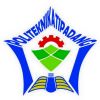Instalasi Digester dan Pelatihan Pembuatan Biogas dari Kotoran Sapi Untuk Bahan Bakar Industri dan Rumah Tangga
Rudianto Rudianto, Zulhamidi Zulhamidi, Pharmayeni Pharmayeni, Irna Ekawati, Gustiarini Rika Putri
Abstract
The issue of renewable energy sources has become a concern, especially after energy sources using fossil fuels are running low. One form of renewable energy that has not been managed optimally is a source of energy that comes from livestock waste from livestock. This livestock waste contains potential that is beneficial to the community. LIvestock waste in the form of cow dung is processed into biogas and can be used as a source of fuel for the community. Dairy farming in Nagari Lasi, Canduang District, Agam Regency, West Sumatra Province, has had a very positive influence on the community, including in the economic aspect. Since then, individuals or communities have started to open businesses, both similar businesses and businesses related to livestock activities. Currently the number of cattle in Nagari Lasi has reached around 1000 heads, plus other livestock such as buffalo and goats. The number of livestock so that the source of cow dung waste is also widely available to be processed as a renewable energy source. One of the tri dharma of higher education for lecturers is to carry out community service. For this reason, the lecturer of the Department of Agro-Industrial Engineering at the ATI Polytechnic Padang carries out service in a dairy farm in Nagari Lasi, Canduang District, Agam Regency, West Sumatra Province. For the initial stage, a digester is built which is a device that becomes a place where organic matter (cow dung) is broken down by bacteria anaerobically (without air) into CH4 and CO2 gases. This CH4 gas is called biogas which can be used as fuel. In addition to producing biogas, the leftover sludge from the dried process will become compost. This compost can also be used by the community for agriculture. The fermentation process that occurs in the digester has produced biogas and can be used as fuel. For 50 liters of cow dung, after being fermented it produces biogas which can fully fill a 500 liter capacity package in three hours. And that amount of gas can be used for burning in the stove for two hours continuously. Combustion using the biogas produced is able to boil water with a capacity of three liters in about ten minutes.
Keywords
Digester, Biogas, Cow Dung
References
Aziz, Muhammad Rosifaul. 2018. “Perancangan Multi Biodigester Portable Dengan Kapasitas 3.100 Liter”. Malang: Universitas Muhammadiyah Malang.
Dianawati, Meksy dan Siti Lia Mulijanti. 2015. “Peluang Pengembangan Biogas Di Sentra Sapi Perah” dalam Jurnal Litbang Pertanian Vol. 34 No. 3 September 2015: 125-134.
Hanif, A. 2010. Studi Pemanfaatan Biogas Sebagai Pembangkit Listrik 10 KW Kelompok Tani Mekarsari Desa Dander Bojonegoro Menuju Desa Mandiri Energi. Surabaya: Institut Teknilogi Sepuluh November.
Sanjaya, Denta et al. 2015. “Produksi Biogas Dari Campuran Kotoran Sapi Dengan Kotoran Ayam” dalam Jurnal Teknik Pertanian Lampung Vol. 4 No. 2: 127-136.
Widodo, T.W., A. Nurhasanah, A. Asari, dan R. Elita. 2009. Pemanfaatan Limbah Industri Pertanian Untuk Energi Biogas. Tangerang: Balai Besar Pengembangan Mekanisasi Pertanian.
Yuniar, Muhammad Ikhwan et al. 2017. “Studi Potensi Pemanfaatan Sampah Melalui Perencanaan Biodigester Untuk Pembangkit Tenaga Llistrik Di Kota Bandung”. Bogor: Universitas Pakuan.









_-_Copy.png)

